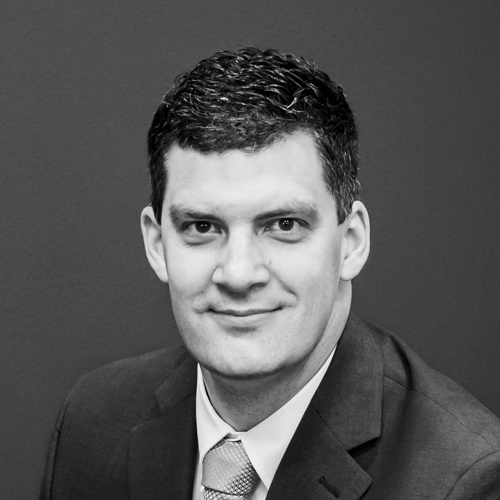Much of the attention on healthcare today is focused on cutting costs. Unquestionably, that’s a key issue among healthcare leaders, but of equal importance is how to reform health systems to meet the changing needs of patients. As a result, those two issues impact each other and can have a profound effect on hospital operations. To illustrate that, Mike Hemsley, deputy general counsel and assistant corporate secretary for Trinity Health, points to the transformation of St. James Mercy Hospital, a nearly two hundred-bed acute care hospital in rural New York State, which Trinity Health acquired.

With many medical treatments no longer requiring extended hospital stays, the number of acute care beds nationwide has declined significantly. This was no different locally, and the institution struggled financially. With an inpatient census persistently far below capacity, numerous efforts to grow and attract physicians and patients to an aging facility had been proven unsuccessful.
But shuttering a community hospital is a drastic step. After all, the hospital was a top employer and a civic mainstay for many decades. It would be more preferable to find other purposes for the facility so that it could remain viable by addressing nonhospital-based healthcare needs in the community. Trinity leaders, including Hemsley, looked for an opportunity to do that.
Trinity Health, a nonprofit Catholic health system operating ninety-four hospitals in twenty-two states, is a prominent organization in a major industry that has been historically resistant to change. Throughout the system, executives face many challenges to reshape operations, including where and how care is delivered across its system. Their work may offer lessons for leaders in other industries facing fundamental change.
To develop the right transformation strategy for St. James Mercy Hospital, Trinity Health leaders studied the local healthcare landscape and opened a dialogue with state regulators and local civic leaders. Emerging from those efforts in 2015 was a plan to build a significantly smaller, new short-stay hospital coupled with behavioral health and substance abuse outpatient services, as well as Programs of All-Inclusive Care for the Elderly (PACE).
The new plan for the hospital came with an innovative financial and organizational structure in which Trinity Health took on the hospital’s debt and spun it off as an affiliate of another regional healthcare organization once the new facility opened. While the hospital continues to provide acute care services, with state financial support under a new state program to support healthcare transformations, the new facility is under construction and is scheduled to open in 2019. Trinity Health will be responsible for the old sight. The complex arrangement not only saved the institution, but it also improved the area’s healthcare.
“The result will be a rationalization of acute care beds in the market, but the area now has a better continuum of care meeting underserved community healthcare needs,” Hemsley says.
Such a drastic reorganization, however, isn’t easy to accomplish. It took coordinated efforts by executives in finance, legal, HR, and other functions within the organization. Hemsley and his colleagues also negotiated with state officials to navigate through myriad regulatory hoops.
Many healthcare institutions will have to undertake such efforts that begin with existential examinations of their missions and can result in a drastically transformed organization. With more options such as urgent care clinics, basic medical services offered by pharmacies, day surgery centers, and specialty clinics, patients have numerous choices for medical care beyond the traditional full-service hospital. These other options are often more economical to run with care more efficiently and effectively delivered. Hospitals that don’t adjust to the new environment face tough times.
“Community hospitals have to assess what it takes to be successful,” Hemsley explains. “Some organizations wait too long to do that and come into distress. Then, they are forced to make decisions with urgency with likely fewer options.”
Healthcare leaders and regulators examine the breadth of services available to a region more intently than ever to gauge how many hospitals and how many beds within them are needed. “To some extent, brick-and-mortar is less important now,” Hemsley says.
Novel approaches to service offerings and physical assets also have to be considered. “You have to be innovative and willing to take risks,” Hemsley explains. “Our job as counsel is to identify options and be navigators not only with regulations, but also with governance at the system level, local level, and with the political landscape of the local market.”
For example, some states’ regulatory schemes were developed before the evolution or expansion of multistate healthcare systems, which can encumber the efficiencies such systems seek to bring to their participating hospitals. In an era when healthcare is consolidating, such rules limit options.
Thus, Hemsley and his team’s engagement with lawmakers and regulators is an important pursuit. When working with local officials on proposed mergers and reorganizations of local hospitals and healthcare systems, Hemsley says diplomacy and tact is critical. “Healthcare is very personal to people,” he says. “They may complain about costs, but they’ll say that their hospital is very important. A community has a lot of pride in its hospital.”
Proposals for drastic change can be alarming to some. So, negotiations over mergers and acquisitions or significant transformations can be complex. To reach a successful outcome, Trinity Health leaders need to demonstrate empathy for all stakeholders. “You have to advance the business goals of all parties,” Hemsley says.
The M&A frenzy in healthcare in recent years will continue as healthcare systems aim to get bigger to achieve economies of scale. Meanwhile, federal and state government continues to reshape the industry, including reexamining long-standing rules that can restrict mergers. “Regulators are listening to healthcare leaders, but there is still a lot of work to do,” Hemsley says.
Recently, federal regulators asked for industry input on reforming the Stark Law, regulations that prohibit physicians from referring a Medicare or Medicaid patient to an entity providing certain health services if the physician—or an immediate family member—has a financial relationship with that entity. The Stark regulations restrict and complicate how healthcare systems can organize, offer services, and receive confirmation. Modifying or eliminating rules that may no longer be necessary in light of changes in reimbursement policy from fee-for-service to bundled care or at-risk arrangements would allow for more flexibility and efficiency in healthcare provider arrangements.
“Government is always cautious, but that they have asked for input on Stark regulations is a good sign that they too recognize these concerns,” Hemsley says.
Whether it’s influencing new regulations, executing M&As, or reorganizing large institutions, healthcare leaders such as Hemsley will have an important say in the complex reshaping of the nation’s healthcare. It’s a vital mission, especially when considering that nonprofits such as Trinity Health give high priority to treating those of modest means. Balancing that core mission with the need to maintain financial health for the organization tests the mettle of any business leader. For his part, Hemsley is enthused that, as a lawyer, he can add value to Trinity Health in its efforts to support its healthcare ministries and position each to succeed in meeting community needs in an evolving delivery system.
Photo: Jeffry Komins
Dale Webber, Healthcare Section Chair at Buchanan Ingersoll & Rooney, is proud to support Michael Hemsley and Trinity Health. Dale and his team help regional and national healthcare clients navigate their ever-changing world through legal, M&A, finance, regulatory, and government relations support. Buchanan is a flexible, easy-to-work-with firm grounded in authentic client-centric values.

